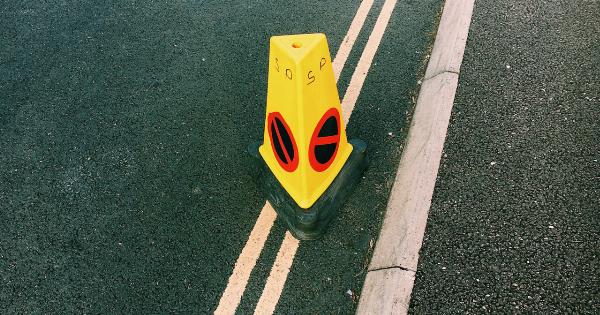Leg cramps, also known as charley horses, are involuntary contractions or spasms that occur in the muscles of the leg. These cramps often happen suddenly and can be quite painful, causing discomfort and temporary disability.
While leg cramps can affect anyone, they are more common in older adults and athletes. In this article, we will explore various preventive measures and treatment options for leg cramps.
Causes of Leg Cramps
Before we dive into prevention and treatment, it is essential to understand the causes of leg cramps. Leg cramps can be caused by several factors, including:.
1. Dehydration: Not drinking enough fluids can lead to electrolyte imbalances, causing muscle cramps.
2. Nutritional deficiencies: Lack of essential minerals like magnesium, potassium, and calcium can contribute to leg cramps.
3. Overexertion: Engaging in intense physical activity or overusing the leg muscles can trigger cramps.
4. Poor blood circulation: Conditions like peripheral artery disease and diabetes can impair blood flow to the legs, increasing the risk of cramps.
5. Medications: Certain medications, such as diuretics and statins, can cause muscle cramps as a side effect.
Preventive Measures
While leg cramps can be quite bothersome, there are several preventive measures you can take to reduce their frequency and intensity. These include:.
1. Stay hydrated:
Drinking an adequate amount of water throughout the day can help maintain proper electrolyte balance and prevent muscle cramps. Aim to consume at least eight glasses of water daily.
2. Stretch regularly:
Performing regular stretching exercises can improve flexibility and prevent muscle imbalances that may contribute to leg cramps. Focus on stretching your calf muscles, hamstrings, and quadriceps.
3. Maintain a balanced diet:
Ensure your diet is rich in essential minerals like magnesium, calcium, and potassium. Include foods such as bananas, spinach, yogurt, and nuts in your daily meals to reduce the risk of nutrient deficiencies.
4. Warm up before exercise:
Prior to engaging in any physical activity, make sure you warm up properly. Warming up prepares your muscles for exercise, reducing the likelihood of cramps.
5. Improve blood circulation:
Activities that promote blood circulation, such as regular walking or cycling, can help prevent leg cramps. Avoid sitting or standing for prolonged periods, as this can restrict blood flow to the legs.
Treatment Options
If you experience leg cramps despite preventive measures, there are several treatment options available to alleviate the discomfort:.
1. Stretch and massage:
When a leg cramp strikes, gently stretch and massage the affected muscle. This can help relieve the spasm and provide immediate relief from the pain.
2. Apply heat or cold:
Applying heat or cold to the cramped muscle can help relax it. Use a heating pad or take a warm bath to promote muscle relaxation, or apply an ice pack wrapped in a towel to numb the area and reduce inflammation.
3. Over-the-counter pain relievers:
Nonsteroidal anti-inflammatory drugs (NSAIDs), such as ibuprofen, can help reduce pain and inflammation associated with leg cramps. However, these medications should be used as directed and with caution.
4. Stay active:
Regular physical activity, such as walking or swimming, can improve muscle strength and flexibility, reducing the likelihood of leg cramps. However, avoid overexertion and listen to your body.
5. Medications:
In severe cases, when leg cramps significantly disrupt daily activities, a healthcare professional may prescribe medications to help relax the muscles and prevent cramping. These may include muscle relaxants or medications to improve blood flow.
When to Seek Medical Attention
In most cases, leg cramps can be managed with self-care measures. However, it is essential to consult a healthcare professional if:.
– Leg cramps occur frequently and are severe in intensity.
– Cramps persist for an extended period.
– You experience muscle weakness or numbness.
– Cramps are accompanied by swelling, redness, or skin changes.
A healthcare professional can evaluate your symptoms, identify any underlying causes, and recommend appropriate treatment options.
Conclusion
Leg cramps can be quite uncomfortable, but by following preventive measures such as staying hydrated, stretching regularly, and maintaining a balanced diet, their frequency and severity can be reduced.
Additionally, treating leg cramps through stretching, massage, and application of heat or cold can provide relief. Remember, it is crucial to listen to your body and seek medical attention if leg cramps persist or are severe in nature.
By taking proactive steps and seeking proper treatment when necessary, you can effectively prevent and manage leg cramps, allowing for better mobility and overall well-being.






























